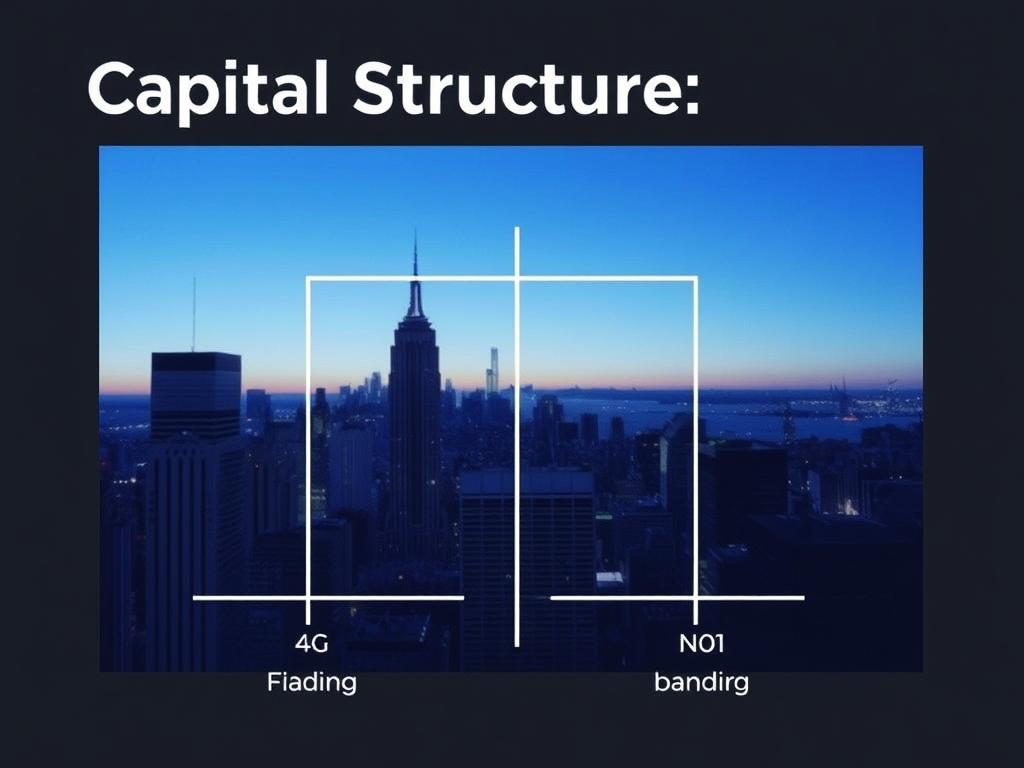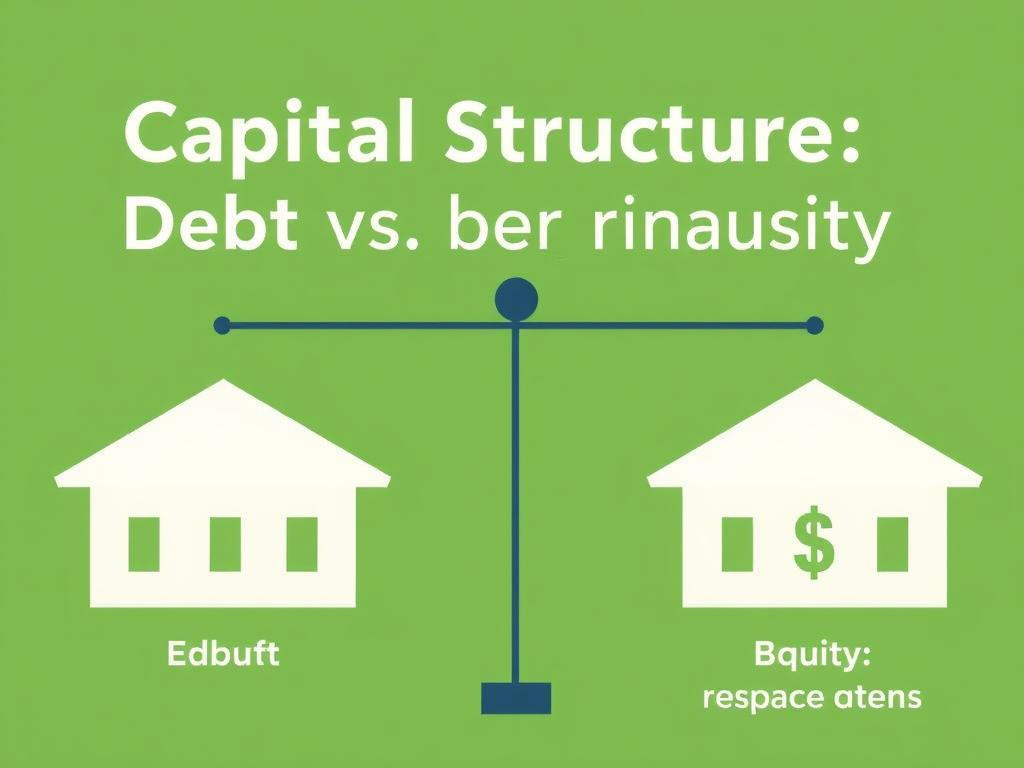Capital Structure: Debt vs. Equity Financing – Understanding the Best Choice for Your Business
What is Capital Structure?

When you’re running a business or thinking about starting one, one crucial topic inevitably comes up: how to fund the business effectively. This is where understanding capital structure becomes vital. Capital structure refers to the way a company finances its overall operations and growth by using different sources of funds. These sources generally fall into two broad categories: debt and equity financing. Deciding the right mix impacts how much control you retain, your costs, your risk, and ultimately the success and stability of your business.
Debt Financing: Borrowing Money to Grow

Debt financing involves borrowing money that must be repaid over time, usually with interest. Common examples include bank loans, bonds, and lines of credit. Many companies choose debt because of its potential benefits and characteristics, which include the ability to retain ownership and tax advantages. One key appeal of debt financing is that the interest payments you make are tax-deductible, which can reduce the overall cost of borrowing.
However, debt carries its own risks. The obligation to repay principal and interest regardless of your business performance can put significant pressure on cash flow, especially in tough economic times. Additionally, taking on too much debt can harm your credit rating and possibly lead to bankruptcy if you cannot meet your obligations.
Advantages of Debt Financing

- Retain full ownership and control of your business
- Interest payments are tax-deductible, reducing overall costs
- Fixed repayment schedule adds predictability
- Can be less expensive than equity over the long term
Disadvantages of Debt Financing
- Mandatory repayments regardless of profitability
- High levels of debt increase financial risk
- Can limit future borrowing capacity
- Interest costs can be expensive if credit terms are unfavorable
Equity Financing: Selling a Stake to Raise Capital
Equity financing means raising capital by selling shares of your company to investors. This can be done privately or through public markets. Equity is often favored for startups and businesses in growth stages since it doesn’t require fixed repayments and can provide valuable expertise or connections if you bring in strategic investors.
However, equity has its trade-offs. You will dilute your ownership, meaning you share decision-making power and future earnings with investors. The cost of equity can also be high if investors expect significant returns over time. Unlike debt, equity financing doesn’t require immediate payments, but investors usually expect to see an increase in the value of their holdings or receive dividends.
Advantages of Equity Financing
- No obligation for regular repayments
- Brings in investors who may offer expertise and networking
- Improves cash flow as the business does not need to pay interest
- Reduces risk of bankruptcy since funds are not repayable on demand
Disadvantages of Equity Financing
- Dilution of ownership and control
- Potential pressure to meet investor expectations for returns
- Dividends are not tax-deductible
- Raising equity can be time-consuming and costly
How to Choose Between Debt and Equity Financing
Choosing the right mix depends on your business’s unique situation and goals. Here are some critical factors you should consider when contemplating your capital structure:
| Factor | Debt Financing | Equity Financing |
|---|---|---|
| Control | Owner retains full control | Ownership is shared with investors |
| Cost | Interest payments may be cheaper and tax-deductible | Can be more expensive due to high expected returns |
| Risk | Obligation to repay increases financial risk | No repayment required, lower bankruptcy risk |
| Cash Flow Impact | Requires regular interest and principal payments | No mandatory payments, good for startup cash flow |
| Flexibility | Less flexible; covenants may restrict operations | More flexible but investors expect growth and returns |
In general, if your business has stable cash flows and access to credit, debt financing may be a cost-effective tool. Conversely, if you’re a startup with uncertain cash flows or want to bring in partners, equity financing could be more appropriate.
Blending Debt and Equity: Finding the Right Balance
Most successful companies use a combination of debt and equity to optimize their capital structure. This blended approach helps manage risk while allowing enough capital for growth. For example, a business might raise some equity capital from investors to fund initial growth and then take on debt later to finance expansion.
A balanced capital structure can be thought of as leveraging the benefits of both financing methods, where the company enjoys tax benefits from debt and the flexibility brought by equity. However, the right ratio varies widely by industry, company size, growth stage, and market conditions.
Typical Capital Structure Mixes by Industry
- Technology startups: Heavy on equity due to growth potential and uncertain cash flows
- Manufacturing firms: Mix of debt and equity, with higher debt for fixed assets
- Real estate companies: Generally more debt-heavy, relying on asset-backed loans
Key Terms to Know in Capital Structure
Understanding financing also means knowing the lingo. Here’s a handy glossary of important terms you’ll come across when discussing debt vs. equity financing:
| Term | Meaning |
|---|---|
| Debt | Money borrowed that must be paid back with interest |
| Equity | Ownership interest in a company, often through shares |
| Interest | Cost of borrowing money, usually expressed as a percentage |
| Dividend | Payment to shareholders from company profits |
| Leverage | Use of debt to amplify returns on investment |
| Cost of Capital | The cost a company pays to use debt or equity financing |
Conclusion
Navigating the capital structure landscape by weighing debt vs. equity financing is one of the most important financial decisions a business owner faces. Both financing options have distinct advantages and limitations, and the optimal choice depends on your company’s financial health, growth prospects, and risk tolerance. Debt is often attractive because it allows you to maintain control and benefits from tax advantages, but it comes with fixed obligations and financial risk. Equity, by contrast, provides flexible funding without repayment pressures but dilutes ownership and may be more costly in the long run. Most thriving businesses blend the two to balance risk and growth potential effectively. By understanding how the pieces fit together, you can make informed decisions that fuel your business toward lasting success.







